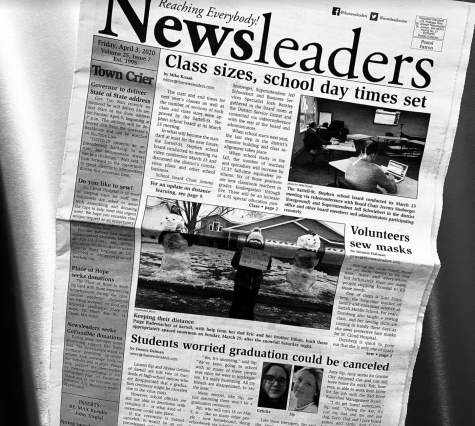
Grade: Senior
Hobbies: Playing tennis, spending time with friends, listening to music
Best Restaurant: Papa John's Pizza
Marvel or DC: Marvel
Favorite...
October 18, 2022
Back in 2019, as the COVID lockdown upended schools across the nation, many had to scramble to find alternatives to lessons and testing. Class lessons were limited, tests were extremely difficult to monitor, and any form of homework had to be digitized. Zoom, a video conferencing platform, became the most popular way to hold classes in schools. Data from Statista shows that Zoom experienced a 300% revenue increase in just the 2020 fiscal year.

However, the distributor of Advanced Placement (AP) exams, College Board, perhaps had to surmount the greatest obstacle – finding a way to give nearly 5 million AP tests to over 2.5 million students. Since AP test scores were a critical part to college admissions, the usually strict testing conditions the College Board used were suddenly impossible to enforce in a digital world. As a result, most AP tests completely got rid of their multiple choice questions and only included a handful of free response questions. The rest of a class’s curriculum that was not taught pre-lockdown was basically removed from testing requirements.
Nevertheless, the most confounding factor in all of the tests was the ability to use the internet to search for answers or information. The College Board decided to allow students to be able to openly use the internet to search for answers, but they discouraged it and modified the questions, so the answers were not directly available on the internet.
For current seniors at Sartell High School, the 2020 AP exams were the first that they had ever taken. It was their first experience of an actual college course, reading a college textbook, and preparing for the biggest test of their academic careers so far. Despite having class from the comfort of their own bedrooms, most students seemed to prefer the classroom environment.
Greta Schmidt, a senior who took the AP Human Geography exam in 2020, said, “I think I got to study a lot more on my own [at home], but it probably would have helped to be in-class too, just to talk with the teacher better because it is kind of hard to communicate over Zoom.”
Nationally, the shortened curriculum and modified testing of the 2020 AP exams seemed to create some doubts in taking more AP exams the following year. According to College Board program participation data, enrollment in AP classes after the 2020 school year took a marginal decline of over 94,000 students, going from 2,642,630 to 2,548,228. The last time the College Board experienced any decline in AP enrollment was in 2003, but that was only a drop of a little less than 16,000 students- just a fifth of the enrollment downturn experienced post-pandemic.
“I think it [the pandemic] harmed their [student’s] work ethic,” said Karrie Fredrickson, a psychology teacher at Sartell High School. “I think that I’m seeing it especially in my students that are coming in. They want everything to be very spoon fed to them, and they don’t take initiative on anything anymore. They just wait for it, and it’s changed how they interact with their colleagues.”
Even though the national downswing in AP enrollment hints at a drop in student’s work ethic, enrollment in AP classes at Sartell High School did not experience any decline – it actually increased. Using data acquired from the Sartell High School Counseling Office, it shows that enrollment in AP classes increased by over 16% – going from 337 students to 392. One of the most popular AP classes in the school, AP Calculus AB & BC, increased from 26 AB and 20 BC students in 2020 to 25 AB students and 27 BC students in 2021. Other AP classes such as AP World History: Modern also had an uptick in enrollment numbers from 2020 to 2021, going from 82 to 86 students (although this number is usually depending on the class size of the grade level).

Grade: Senior
Hobbies: Playing tennis, spending time with friends, listening to music
Best Restaurant: Papa John's Pizza
Marvel or DC: Marvel
Favorite...